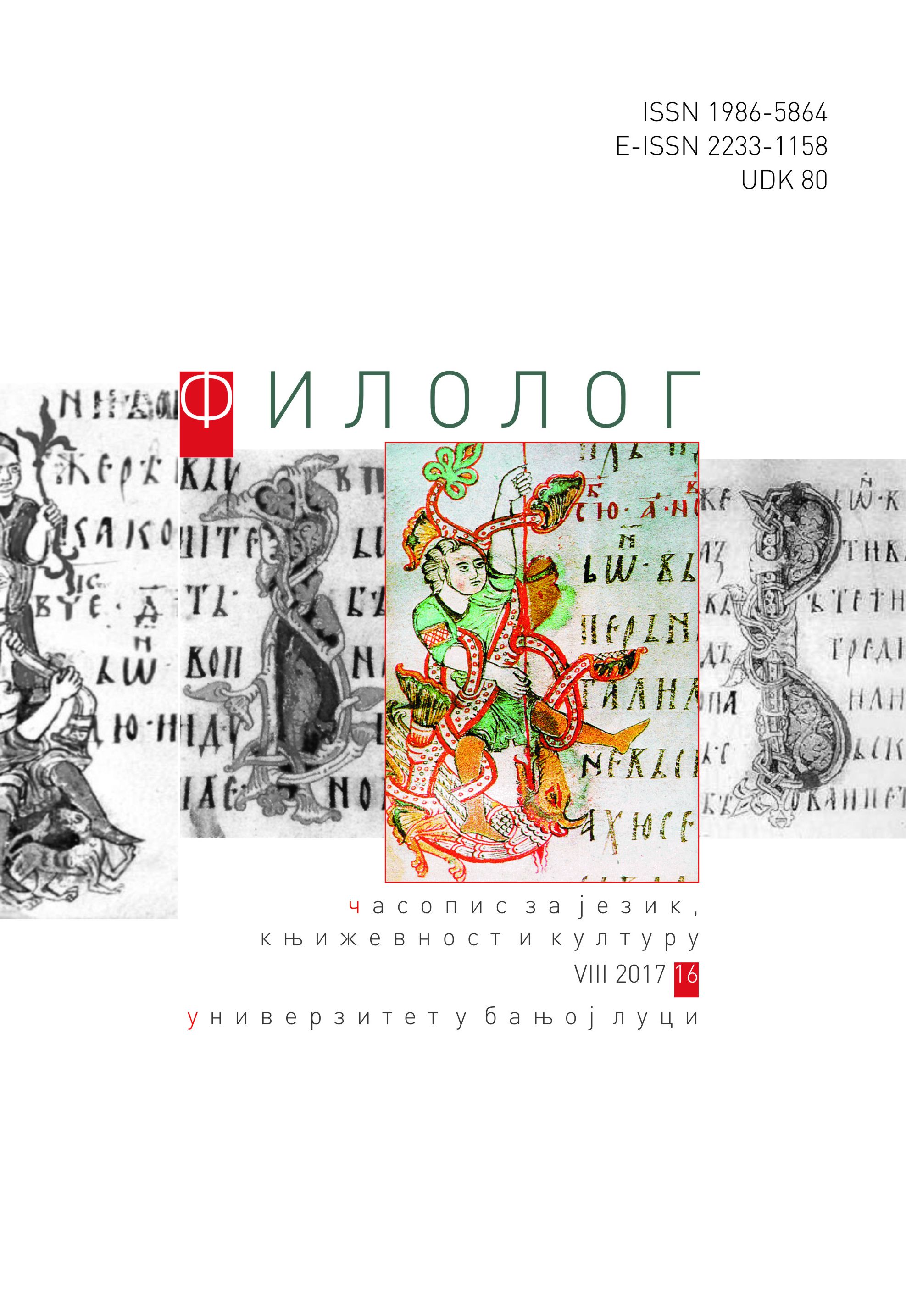Semiotičko-kulturološki aspekti unutrašnje drugosti i izegorije u totalitarnoj kulturi na primeru Andrićeve „Proklete avlije”
Semiotic-Cultural Aspects of Inner Otherness and Isegoria in a Totalitarian Culture on the Example of Andrić’s “The Damned Yard”
Author(s): Sofija M. KošničarSubject(s): Fiction, Studies of Literature, Serbian Literature, Theory of Literature
Published by: Филолошки факултет Универзитета у Бањој Луци
Keywords: semiotic of culture; semiosphere theory; semiospheric self-description; culture; totalitarian semiospheric core of culture; inner disorganized substructure – inner Otherness; isregoria; Decalog;
Summary/Abstract: In this research the following is considered: two key modes of forming semiospheric inner disorganised substructure in a non-elastic (totalitarian) semiospheric core of culture; the attitude of a totalitarian culture towards some forms of own inner Otherness, that is towards inner alterity. The research subject is the example of Andrić’s The Damned Yard, which is, in a methodological sense, analysed as a typical case study because it is a representative example of a sharp, intolerant autocratic, semiospheric core of a culture rejected by one’s own inner Otherness. By semiotic-cultural analysis the key thematic-motivational complex of The Damned Yard is revealed whose central place is regime-disputing isegoria in a totalitarian society, concretely in the timar-spahic system of the Ottoman Empire. Considering that a reliable indicator of democracy and, therefore, an invariant feature of democratic systems is isegoria, it is here observed as a litmus for marking the democracy of a focused culture. Apart from disputing the right to isegoria, the analysis points out that Decalogue is the following key standard by which a non-elastic semiospheric core of culture, concretely, the totalitarian Ottoman regime – identifies the distance of its self-description and deviation articulates as its own inner Otherness. In striving to eliminate this from its structure the Ottoman regime liquidates these forms of inner Otherness by penalties in the form of spreading fear, force or killings. The subject of this research is dominantly considered from the position of the semiospheric theory of Yuri Mikhailovich Lotman with vocation of some image aspects, which are compatible with the mentioned theory.
Journal: Филолог – часопис за језик, књижевност и културу
- Issue Year: 2017
- Issue No: 16
- Page Range: 161-179
- Page Count: 19
- Language: Serbian

